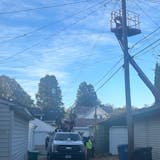Minnesota prison officials have identified a form of contraband that's now off-limits around inmates: news cameras.
A media policy spelled out in February prohibits any photography or videography, reversing a previous rule that allowed inmates, with the approval of the Department of Corrections (DOC), to grant on-camera interviews.
Corrections officials say they made the change to ensure that the news media access policy "aligns" with the contraband policy, which includes cameras, along with pornography, lighters, knives, wrapped packages and other dangerous stuff.
"It wasn't prompted by any specific event," agency spokeswoman Sarah Latuseck said in an e-mail. Nor was it prompted by a story, she said.
My concern about the camera ban goes beyond the implications for my own industry. It means that the nearly 10,000 inmates of Minnesota prisons will recede even further from public view, their faces all but invisible.
No one would argue with the need to control the prison environment to ensure the safety of inmates and staff. But banning cameras from interviews with consenting inmates is "absurd," said Gregg Leslie, legal defense director of the Reporters Committee for Freedom of the Press.
The Washington-based advocacy group has fought to maintain the media's access to inmates. Leslie said the U.S. Supreme Court has affirmed that inmates do retain speech rights, and by extension the ability to communicate with reporters.
The outspokenness of a well-known inmate serving a life sentence for murdering a police officer led to a backlash in Pennsylvania, where the Legislature last year passed a law that bans convicts from inflicting "mental anguish" on their victims.


